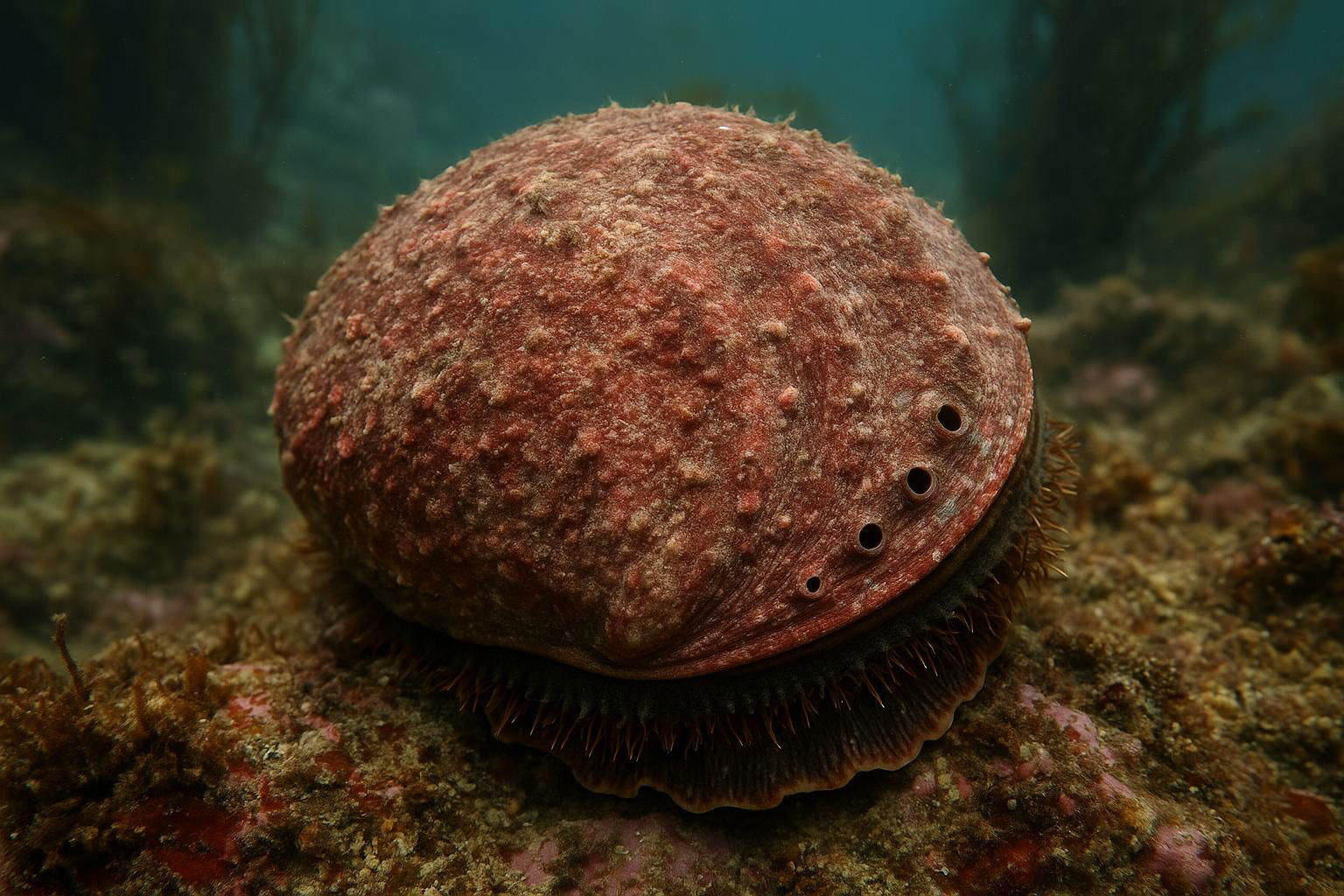
Red Abalone
Haliotis rufescens
The Red Abalone (Haliotis rufescens) is a marine gastropod mollusk that is highly valued for its commercial and ecological significance. Typically found along the rocky shores of the Pacific coast from Southern California to Baja California, this species is recognized for its distinctive, reddish-brown shell, which can reach up to 30 centimeters in length. The inside of the shell, iridescent and nacreous, displays a spectrum of vibrant colors ranging from silvery whites to deep blues, making it highly prized for decorative purposes.
Red Abalones prefer kelp forest habitats, where they graze on algae using their radula, a specialized feeding organ. Known for their slow growth rates, they have a long lifespan that can extend beyond 30 years, yet they mature slowly, taking up to 10 years to reach reproductive age. Due to their ecological role in marine ecosystems and their vulnerability to overfishing, strict management and conservation measures are necessary to sustain their populations.
Beyond their ecological role, Red Abalones are culturally significant, particularly among indigenous communities who have historically utilized them for both food and ornamental crafting. Conservation efforts aim to strike a balance between preserving these natural populations and supporting sustainable harvesting practices.

 All Species & Breeds
All Species & Breeds
 Highland Cattle
Highland Cattle
 Miniature Donkeys
Miniature Donkeys
 All Species Directory
All Species Directory
 Highland Cattle in Virginia
Highland Cattle in Virginia
 Miniature Donkeys in Texas
Miniature Donkeys in Texas












